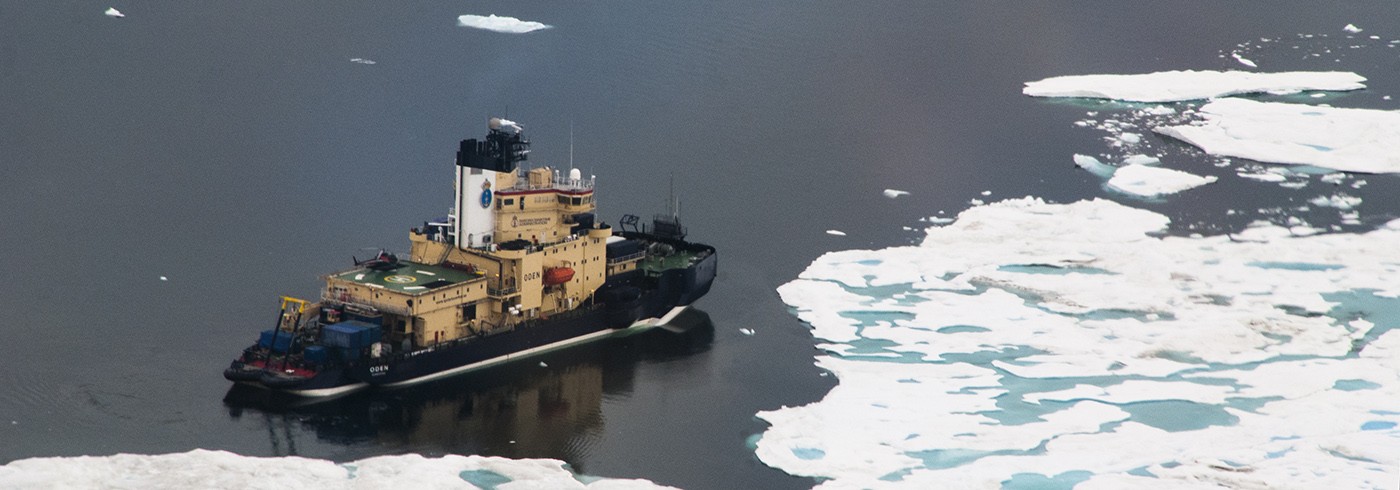What are high-Arctic aerosols and clouds made of?
1 August 2018 - 20 September 2018
Our main working place on the 4th deck of Oden. The red Swiss lab-container to the left of the aerosol lab where our inlet systems and instrumentation were installed. Photo: Paul Zieger
The Arctic is experiencing a dramatic transformation as a result of anthropogenic climate change. The processes driving the accelerated change are not fully understood, yet they propagate through the entire global climate system with impacts on weather, ecosystems and geopolitics. Clouds play a major role in the Arctic system and are among the main contributors to the overall uncertainties of future predictions. How are clouds made and of what? To better understand cloud processes in clean atmospheric conditions, we chose to do measurements in the North Pole area where data are particularly scarce. Our experiment was set in a strategic time around the re-freezing period to investigate the change in the atmospheric particles as the season changes.

Inlet systems installed on the 4th deck on Oden. The inlets were used to sample aerosol particles, cloud droplets and ice crystals. Photo: Paul Zieger
Within our project “Aerosol-cloud interaction in the high Arctic”, we installed various inlet systems to experimentally determine the microphysical and chemical properties of aerosols and cloud droplet residuals using a large suite of new experimental techniques. We determined the size, distribution and composition of particles with various instruments. These parameters are essential to understand cloud formation. For example, we found that particles around a few tens of nanometers are able to act as cloud condensation nuclei in the Arctic, which is relatively uncommon at our latitudes. An additional focus was the characterization of newly formed nano-particles. Gigabytes of data were recorded and the analysis will keep us busy for the next years.

Julia Schmale working inside the Swiss lab-container with aerosol instrumentation in the background. Photo: Paul Zieger

Arctic shallow fog on September 6 2018. Photo: Patrick Duplessis
Paul Zieger
Department of Environmental Science and Analytical Chemistry (ACES), Stockholm University

